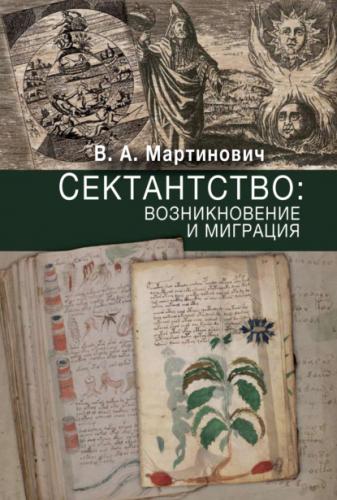151
С. 347–350. Goodenow S. B. Sectarism, Alliance, and the Basis of Fellowship // New Englander and Yale review. 1874. Vol. 33:127. P. 337–355.
152
Berger P. L. Sectarianism and Religious Sociation // The American Journal of Sociology. 1958. Vol. 64:1. P 41–44.
153
С. 126. Marty M. E. Sects and cults // The Annals of the American Academy of Political and Social Science. 1960. Vol. 332. P 125–134.
154
Интересно также, что Марти не относит пятидесятников к религиозному мейнстриму Америки: Marty M. E. Sects and cults // The Annals of the American Academy of Political and Social Science. 1960. Vol. 332. P 125–134.
155
Понятие «традиционная религия» в английском языке имеет сразу семь эквивалентов, отличающихся друг от друга более или менее четкими оттенками смысла: “conventional religion”, “mainline religion”, “mainstream religion”, “traditional religion”, “dominant religion”, “established religion”, “dominant belief system”. Кроме того, есть еще термин “established church”, который можно перевести как «традиционная церковь» и “orthodox religion”, который в ряде случаев используется не в традиционном для него значении «Православная религия» или «Православная Церковь», а в значении «традиционная религия». Иногда можно встретить также термин “official religion”, переводящийся как «официальная религия». В обозначении терминов «нетрадиционная религия» и «нетрадиционная религиозность» английский язык несколько беднее и опирается лишь на несколько основных вариантов: “unconventional religiosity”, “unconventional religion”, “nonconventional religon”, “nonmainstream religions”, “non-traditional religion”, “non-traditional church”.
156
Martin D. A. The Denomination // British Journal of Sociology. 1962. Vol. 13, № 1. P 1-14.
157
См. например: С. 71–79. Greeley A. M. The Denominational Society: A Sociological Approach to Religion in America. Glenview: Scott, Foresman & Co, 1972. 266 p.; Goode E. Some Critical Observations on the Church-Sect dimension // Journal for the Scientific Study of Religion. 1967. Vol. 6:1. P. 69–84.
158
Nelson G. K. The Concept of Cult // Sociological Review. 1968. Vol. 16. P 351–362.
159
С. 64. Coleman J. A. Church-Sect typology and organizational precariousness // Sociological Analysis. 1968. Vol. 29:2. P. 55–66.
160
Wallis R. The New Religions as Social Indicators // New Religious Movements: A Perspective for Understanding Society. Ed. Eileen Barker. New York; Toronto: The Edwin Mellen Press, 1982. P 216–231.
161
Wallis R. The elementary forms of the new religious life. London; Boston; Melbourne; Henley: Routledge & Kegan Paul, 1984. 156 p.
162
Wallis R. The cult and its transformation // Sectarianism. Analyses of Religious and Non-Religious Sects. Ed. by R. Wallis. London: Peter Owen, 1975. P 35–49.
163
Richardson J. T. An Oppositional and General Conceptualization of Cult // The Annual Review of the Social Sciences of Religion. 1978. Vol. 2. P. 29–52.
164
Swatos W. H. Church-Sect and Cult: Bringing Mysticism Back In // Sociological Analysis. 1981. Vol. 42:1. P 17–26.
165
Здесь Сватос приводит в качестве примера культ Девы Марии в католической церкви.
166
С. 128; 211; 245. Stark R. The Future of Religion. Secularization, Revival and Cult Formation / R. Stark, W. S. Bainbridge. Berkeley: University of California Press, 1985. 571 p.
167
С. 52–53. Осипов А. И. Духовность. Традиция. Патриотизм. Минск: МНО, 2001. 100 с.
168
Casanova J. Public Religions in the Modern World. Chicago; London: The University of Chicago Press, 1994. 320 p.
169
DawsonL. L. Creating “Cult” Typologies: Some Strategic Considerations // Journal of Contemporary Religion. 1997. Vol. 12. № 3. P. 363–381.
170
Luckmann T. The Invisible Religion. The problem of Religion in Modern Society. New York; London: The Macmillan Co., 1967. 128 p.
171
С. 255. Luckmann T. The Religious Situation in Europe: the Background to Contemporary Conversions // Social Compass. 1999. Vol. 46:3. P. 251–258.
172
Campbell C. The Cult, the Cultic Milieu and Secularization // A Sociological Yearbook of Religion in Britain. 1972. Vol. 5. P 119–136.
173
С. 386. Campbell C. Clarifying the cult // British Journal of Sociology. 1977. Vol. 28:3. P 375–388.
174
Tiryakian E. A. Toward the Sociology of Esoteric Culture // American Journal of Sociology. 1972. Vol. 78:3. P 491–512.
175
Lemert C. C. Defining non-church religion // Review of Religious Research. 1975. Vol. 16:3. P 186–197.
176
С. 55–62. Jorgensen D. L. The Esoteric Scene, Cultic Milieu, and Occult Tarot. New York; London: Garland Publishing, 1992. 269 p.
